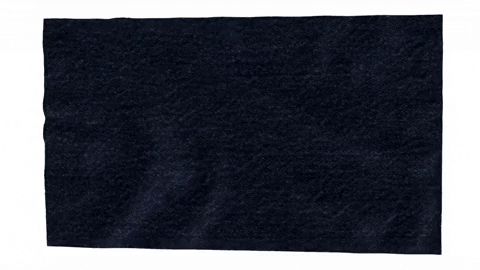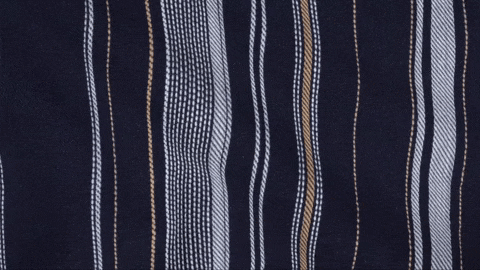Digitizing the Denim Supply Chain
- Ani Wells

- Jun 14, 2021
- 6 min read
I’ve noticed a rage building inside of me when I see the dreaded rainbow wheel of death on screen. Why isn’t this image from Pexels downloading instantly!? I have fallen into a habit of frustration when things aren’t as speedy as I think they should be. But, if I take a step back, I can see how speedy this lagging download actually is. Instead of traveling to Mount Kilimanjaro, hiking to the top of the mountain, snapping the photo, traveling back home to get it developed, then uploading it to the world wide web, all I really had to do was click and wait 30 seconds for my download. Efficiency or convenience? I’d call it a combination of the two, which Inqova has been working to provide through a completely digitized product development process. I asked Jørgen Sevild, Founder of Inqova, how they plan to do it. Digital design is starting to boom, but it’s been difficult to replicate high-quality denim fabrics digitally with all of the nuances in its unique character. Like the denim problem solvers they are, Inqova has just launched INDIKON 3D, a new solution for digitizing denim fabric that does not require any upfront investment in dedicated equipment. Just like your pay-as-you-go phone plan, INDIKON 3D works on a pay-as-you-scan model. The digitization process is extremely user friendly, and gives mills the freedom to complete the process in-house ready to launch any new fabric developments to the world in seconds.
The 4K 3D fabric files are completely compatible with online marketplaces like Swatchbook and Material Exchange, and 3D design software like CLO3D and Browzwear. INDIKON 3D is also in close collaboration with Jeanologia to develop better digital fabrics for an accurate digital laundry.
“With mills finally being able to digitize their fabrics in-house in a fast, easy, accurate, and affordable way, this technology advancement is a major step forward towards better digital product development – less waste, in less time, with greater transparency.” - Inqova
HEY JØRGEN, CONGRATULATIONS ON THE LAUNCH OF INDIKON 3D!!
AFTER OUR CHAT I WAS VERY INSPIRED BY YOUR VISION FOR A COMPLETELY DIGITAL PRODUCT DEVELOPMENT PROCESS… HOW DO YOU PLAN ON GETTING THERE AND WHERE IS “THERE”?
We’ve been working on understanding and developing a digital denim supply chain, from digital fabrics to garments and denim laundry, where the goal is to create a final digital product that is identical to the physical outcome. At this point, we have defined “there” as a workflow that creates 3D visuals that are true-to-life, with production-ready tech-packs and details to go directly into scalable production. Getting there is the first step towards enabling digital fashion from within the supply chain, and there’s a whole new world of opportunities for brands and manufacturers to tap into from there onwards.
To check the feasibility and better understand the current challenges we need to overcome when creating this workflow, we set up a pilot project last year with our production partners Advance Denim, Crystal Group, and Jeanologia. That has so far created a great case study and feedback environment for us to continue to develop a better system. The first challenge we ran into was digitising denim fabrics and that’s what guided us when creating INDIKON 3D over the past year together with Bandicoot. Denim fabrics are not like other fabrics and we knew from the beginning that we needed a new approach to this.
CAN YOU WALK US THROUGH HOW IT WOULD EXACTLY WORK? WHAT ARE THE STEPS FROM IDEATION TO CONCEPTION?
If we take a step back to where it originally started, we are building the Digital Denim Operating System to be the backbone of the growing landscape of technologies that are supporting the denim industry. Just like a computer has internal hardware components from multiple vendors (like Intel and Nvidia), the software operating system (like Windows or macOS) is the backbone of all the applications that we engage with to create the outputs we need from a computer. The idea behind the Digital Denim Operating System is more conceptual than an actual software operating system. It is intended to be more of a forum or community for the industry to build innovation and integration on top of - a backbone to launch new applications and connect them with each other.
We are seeing a lot of good companies create applications to greatly improve processes with digital tools, but these tools often have a specific focus on certain processes in the supply chain. I personally believe that this focus is the right approach, but as everyone is focusing on creating better solutions for specific processes, we need an operating system that helps integrate applications together to create better workflows, often involving a whole box of tools. The current case of the denim industry is that there are a lot of good tools out there, but a lot of users and companies are finding it difficult to choose the right tools and to implement them correctly to get the right results. That’s where we want Inqova and the Digital Denim Operating System to be a map of all the technologies available, facilitate better integration and “plug-and-play” relationships between tools, and to help the industry leverage digital technologies for positive environmental and social impact.
We are looking to work together with technology companies that can help make the denim industry better. We believe in the sharing economy and it’s clear that we’ll need more transparency and collaboration to collectively improve how things are done. Imagine if the industry leaders truly believed so strongly in their own abilities to drive continuous innovation that they would openly share best practices with their peers, knowing that they’ll be six steps ahead by the time the others catch up. That’s what we hope the Digital Denim Operating System will be on a more cultural level. By collectively identifying challenges and collectively working to overcome them, only then will we start to create a sustainable denim industry.
WHAT CHALLENGES HAVE YOU COME ACROSS AND HOW DO YOU PLAN TO OVERCOME THEM?
As we started to bring the idea of a Digital Denim Operating System to life through our pilot project with Advance, Crystal and Jeanologia last year, we ran into our first challenge of digitizing denim fabrics in a way that was acceptable to the experts in the industry. Since no one else that we knew about was specifically focused on this challenge, we simply saw the need to solve it ourselves. That’s when we were lucky to meet the guys from Bandicoot Imaging Sciences in Australia. We combined our knowledge of the denim industry with the amazing solution they had created, and that is what became INDIKON 3D - a cloud-based fabric digitisation platform that lets you turn physical denim fabrics into beautiful 3D-ready materials in a blink.
When developing INDIKON, there have been a lot of good challenges. We are still overcoming new challenges every day, but the solution we have now launched tackles some of the key ones. For one, digitizing denim fabrics in various shades and in a correct colour profile to produce a true-to-life digital garment has been tricky. We have also been working hard to develop the process of digitising a series of wash-down panels, as well as to utilize technical fabric data to better recreate the physics of the fabric digitally. We have so far received some great feedback from the industry after having launched, and everyone I have spoken to so far are excited and supportive of the enablement the solution creates for better downstream digital workflows.
INDIKON is our first solution to the first challenge we ran into while building the Digital Denim Operating System. In order to overcome similar challenges in the future, we are looking for other amazing partners to collaborate with.
WHAT ARE YOUR TOP REASONS FOR ADVOCATING FOR A DIGITAL DENIM PRODUCT DEVELOPMENT PROCESS?
Inqova was founded specifically to leverage digital technologies for positive environmental and social impact, and since we work specifically with the denim industry, I would say that advocating for digital denim product development processes are at the heart of everything we do.
I believe that digital tools and workflows for denim product development has the potential to:
Reduce material usage and waste by reducing the amount of physical samples created
Improve effectiveness / save time by collaborating on 3D product development and increasing efficiency / lower costs for brands, garment and fabric makers.
Create new opportunities in the developing digital economies
The digital denim innovation we see today is only the beginning. Every mill should digitise their fabrics in-house to offer digital samples before offering physical ones. Once a fabric has been made digital, it’s easily distributed to a hundred, thousand or hundred thousand customers at zero marginal cost, both to the business and to the environment.
Thanks, Jørgen, for explaining the future of Digital Denim. As you can imagine, digitizing the product development process will save us from creating a lot of waste! And waste is one of my biggest anxieties!! So, I hope to see more and more hop on the Digital Denim OS process. But, one can’t forget the impact our digital world creates, as well. Even though we might not physically see any waste being generated, we should still be intentional with our digital designs and development choices :)
What are your thoughts on going digital? Let us know in the comments and until next time friends. STAY DILIGENT and always be curious.








Comentarios